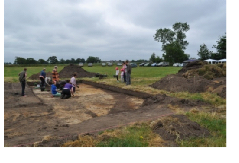
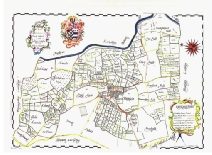
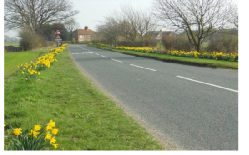
CERAMIC PRODUCTION
Whilst we are talking fire and cracking pots, I would like to move on to pot-
As we started to uncover more and more sherds of pre-
My second attempt at firing clay was to try to create a full pot with the new knowledge that I needed to ensure the clay was fully dry before it was introduced to heat. First, I rolled out a circle of clay to make a flat base. I then made rolls or coils of clay to gradually build up the sides of, in this case, a bowl. As I was building the sides, I kept smoothing out the coils using a flat smooth stone on the inside and wooden paddle on the outside. Here is the finished article prior to drying. I also made a smaller bowl which you will see in the next slide.
I put the finished bowls in the greenhouse to dry out. When I thought it was dry enough, I got the farmers permission to build a fire pit in his field and here it is As you can see it is laid on a bed of straw acting as kindling and I made an air vent into the pit which turns out to have been a mistake. I then packed the pit and around the bowls with wood lit the fire and covered it over with the sods of grass I had removed when I dug the pit. I left it burning for 24 hours. On returning I found that the smaller bowl had become damaged by too much heat, a direct result, I suspect of the air vent and the larger dish had cracked which, I think, might be because the larger vessel had not dried out sufficiently and may have had walls that were too thick.
My third attempt involved making an Arras Culture beaker, typically found up in the Wolds with cremation burials and a vessel of a type that the experts told me we had been finding in our archaeological record; plain, undecorated, bucket-
The third attempt was a great success and even had the right colour and texture of the sherds we had been recovering from the excavations. Pity about the crude decoration but at least I had proved that anyone can make pottery with little or no experience. I had learned from my previous attempt in that the beaker was much thinner walled than the other vessels I had made. The image shows two real Arras culture beakers.

Clay mix
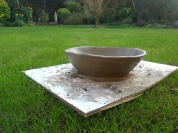
2nd attempt
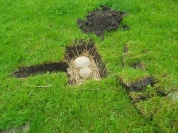
Clamp kiln
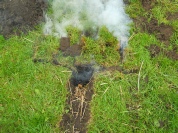
Firing
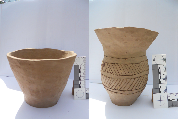
Dried pots pic 1
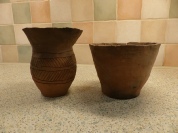
Fired pots
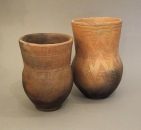
Real beakers